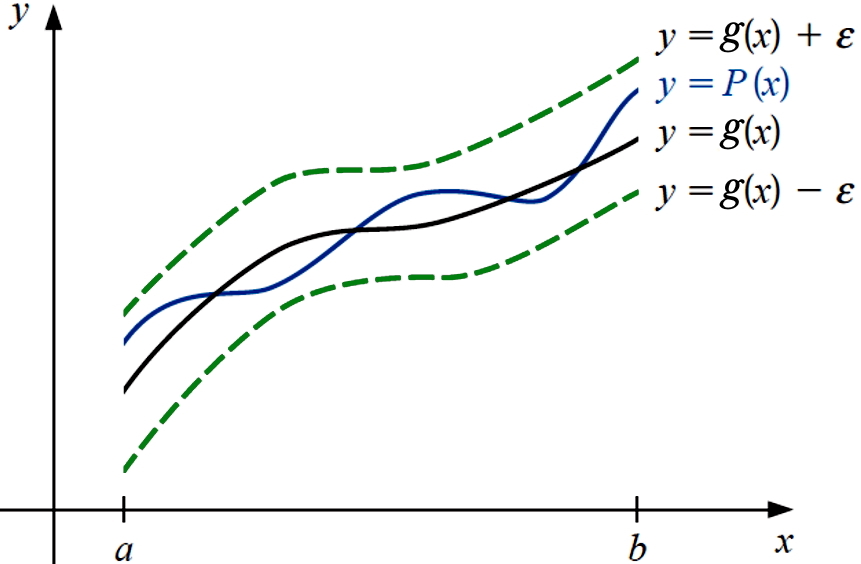3.1. Introduction#
Recall that an expression of the form
is called a polynomial. In this expression, \(c_{0}\), \(c_{1}\), …, \(c_{n}\) are numbers and \(x\) is a variable. If \(c_n \neq 0\), the integer \(n\) is called the degree of the polynomial, and \(c_n\) is called the leading coefficient.
A polynomial of degree \(1\) |
\(ax+b\) |
A polynomial of degree \(2\) |
\(ax^2+bx+c\) |
A polynomial of degree \(3\) |
\(ax^3+bx^2+cx+d\) |
\(\vdots\) |
\(\vdots\) |
A polynomial of degree \(n\) |
\(a_nx^n+a_{n-1}x^{n-1}+a_{n-2}x^{n-2}+\ldots+a_{1}x^{1}+a_0\) |
Weierstrass Approximation Theorem
Let \(g\in C[a,b]\). Then for each \(\varepsilon>0\), there is a polynomial \(P(x)\) such that

Fig. 3.1 Weierstrass Approximation Theorem. Figure is from [Burden and Faires, 2005] with minor modifications.#
Interpolating Polynomial
Assume that \(n+1\) data pairs \((x_0,y_0 )\), \((x_1,y_1 )\), \((x_2 , y_2 )\), \ldots, \((x_n , y_n )\) are available in a way that the \(x_i\)s are distinct. Then, there exists a polynomial such that
For this data, this polynomial is called the interpolating polynomial.
